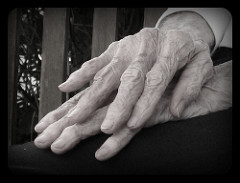In Part I of this series, I introduced research that discovered the potential of the drug ursodeoxycholic acid (UDCA) to be used to help fight Parkinson’s disease (PD). The drug had already been used for decades to treat liver disease, and researchers at Sheffield University were the first to find that in addition to increasing the efficiency of tissue containing LRRK2 carriers, UDCA also has beneficial effects on dopaminergic neurons, the nerve cells affected in Parkinson’s, in a fly model of the disease.
Image Source: Snow-02
As I mentioned in my earlier article, although we do know that a specific mutation in the LRRK2 carrier is the most common inherited cause of PD, the disease is still idiopathic, insinuating that we still do not understand its precise underlying mechanism. What we do understand, however, is that mitochondrial defects, and by extension, reduced energy levels, are a factor in a number of diseases that affect the nervous system such as PD. This is because nerve cells have particularly high energy demands, and therefore, defects in the cell’s energy generators crucially impact their chances of survival.
Professor Oliver Brandmann, Professor of Movement Disorders Neurology at the University of Sheffield, added: “Following on from the promising results of our in vitro drug screen, we were keen to further investigate and confirm the potential of UDCA in vivo — in a living organism.” Because UDCA has already been in clinical use for decades, Professor Brandmann explained, advancement to clinical trials could be rapid.
Collaborators from the University of York demonstrated the beneficial effects of UDCA on Drosophila melanogaster, or fruit flies. In this study, all of the information previously mentioned comes together: in these flies, mitochondrial defects to the dopaminergic neurons caused by the LRRK2 mutation were monitored through a progressive loss in visual function. As expected, flies carrying the mutation maintained their visual response when fed with UDCA.
Dr. Elliott said, “The treatment of fruit flies carrying the faulty LRRK2 gene with UDCA showed a profound rescue of dopaminergic signaling. Feeding the flies with UDCA partway through their life slows the rate at which the fly brain then degenerates. Thus, mitochondrial rescue agents may be a promising novel strategy for disease-modifying therapy in LRRK2-related Parkinson’s.”
Dr Arthur Roach, Director of Research and Development at Parkinson’s UK, which part-funded the study, concluded: “This type of cutting-edge research is the best hope of finding better treatments for people with Parkinson’s in years, not decades.”
Feature Image Source: Grandmom’s Hands by Angie










